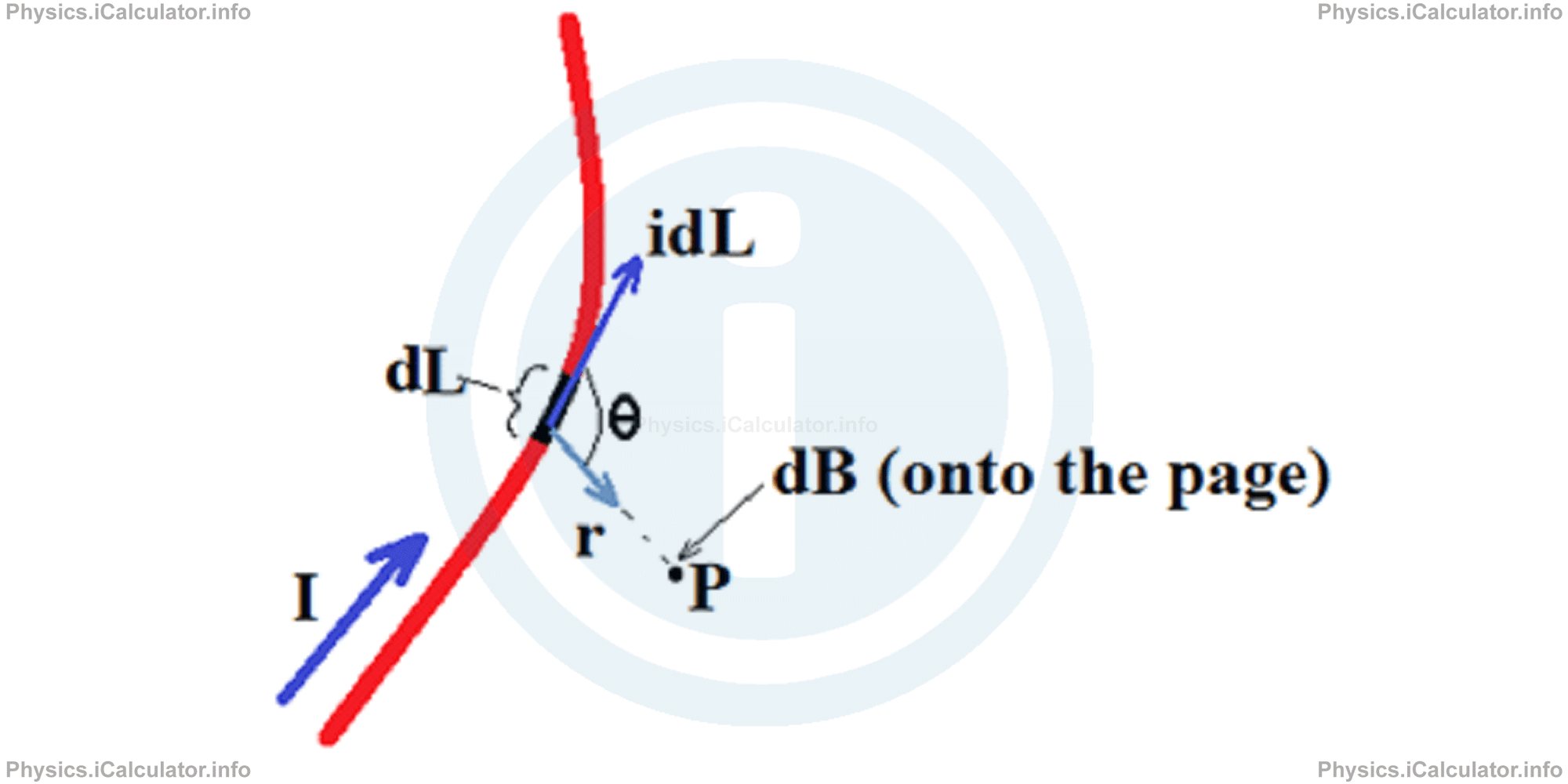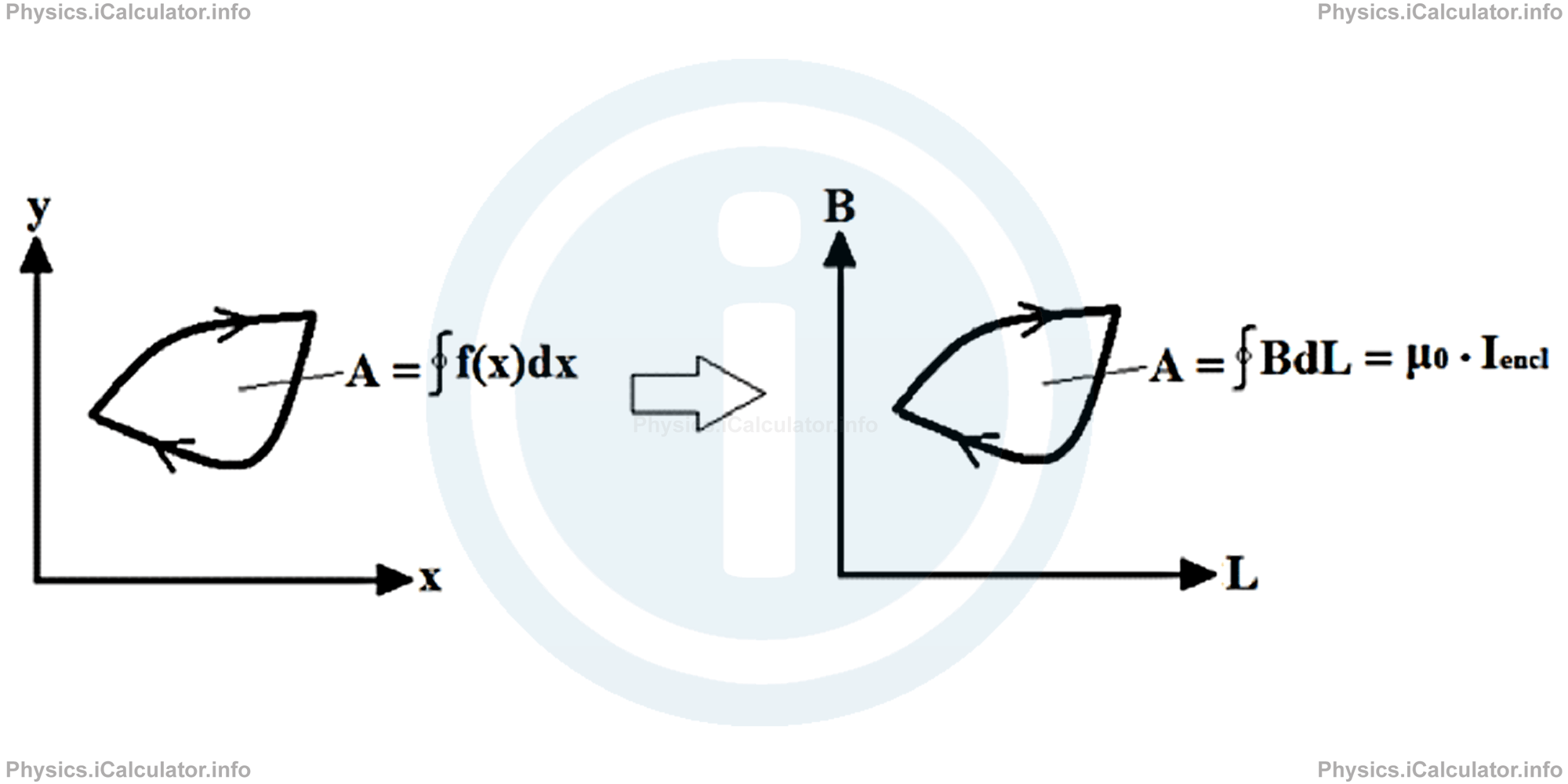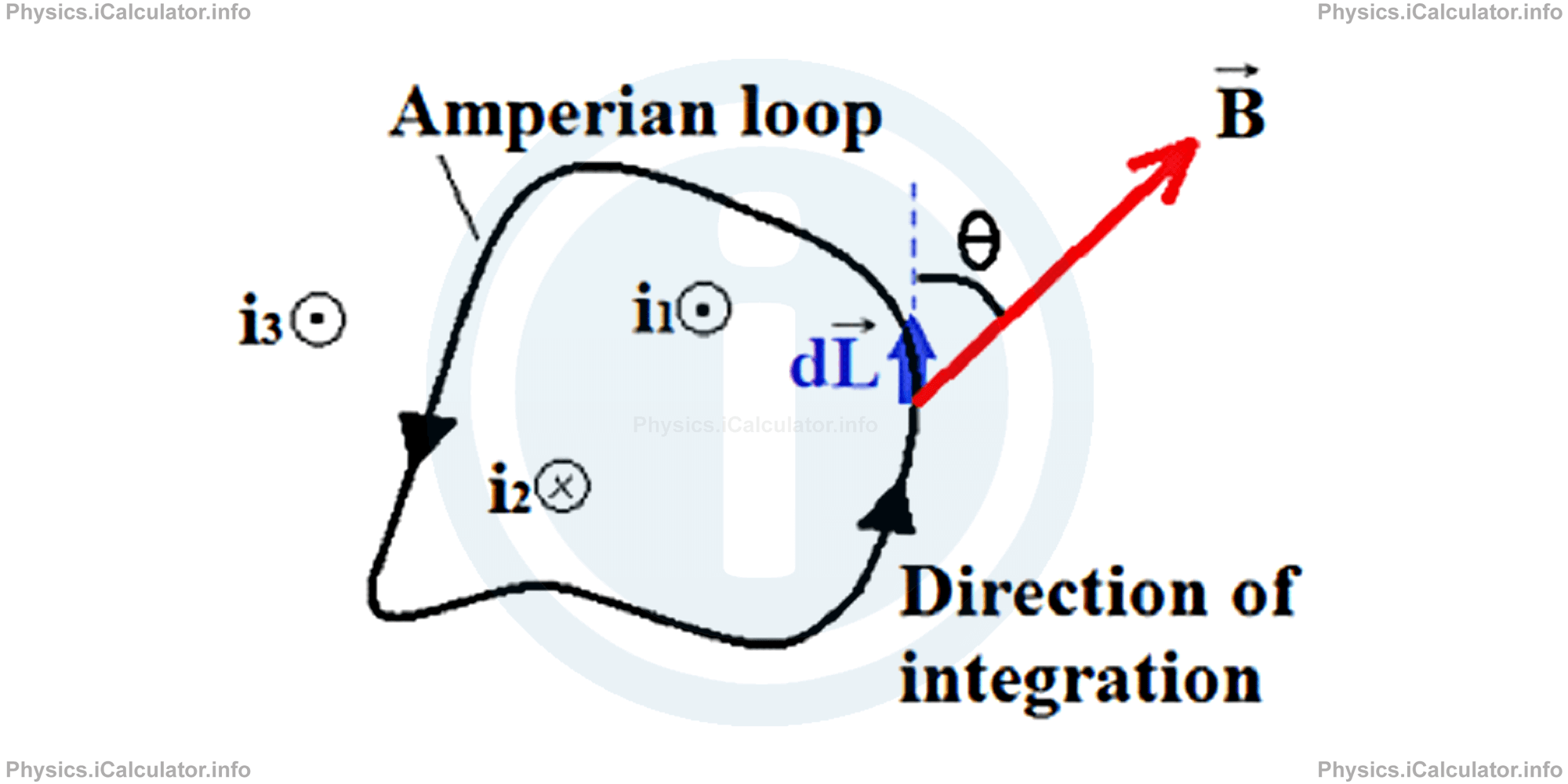Menu
Physics Lesson 16.6.2 - Ampere's Law
Please provide a rating, it takes seconds and helps us to keep this resource free for all to use
Welcome to our Physics lesson on Ampere's Law, this is the second lesson of our suite of physics lessons covering the topic of Ampere's Law, you can find links to the other lessons within this tutorial and access additional physics learning resources below this lesson.
Ampere's Law
In the tutorial 14.6 "Electric Flux - Gauss Law", we explained that the net outward normal electric flux through any closed surface is proportional to the total electric charge enclosed within that closed surface. For example, the net outward electric flux through a charged sphere is
= 1/4πϵ0 ∙ Q/R2 ∙ 4πR2
= Q/ϵ0
We can use the integral method to find the same result. Thus, for a small segment dA of the sphere, we have
The total flux through the entire surface A is calculated by taking the integral of the above expression. We have:
= ∫E ∙ dA
= E ∙ A
= 1/4πϵ0 ∙ Q/R2 ∙ 4πR2
= Q/ϵ0
As you see, the result obtained is the same for both methods used.
Similarly, we can find the net magnetic field due to any distribution of currents by first considering the differential magnetic field dB⃗. The magnitude of the elementary magnetic field produced by a current-length element idL⃗ at the given point P, which is at a distance r from the given current element, is (the scalar version):

The above formula is known as the Biot-Savart Law. If the current distribution has some symmetry, we can integrate the above expression to obtain a simpler expression for the magnetic field. Thus, after making a few arrangements in the integral, we have
The above expression is known as the Ampere's Law and it is especially useful when considering the current flowing through a closed loop. In such cases, we can write:
By definition, Ampere's Law states that for any closed loop path, the sum of the length elements times the magnetic field in the direction of the length element is equal to the permeability of free space times the electric current enclosed in the loop.
The circle in the symbol of integral shows that it is the integral of a closed path (loop). Geometrically, it represents the area bordered by the graph only, not by the horizontal axis as in normal integrals, as shown in the figure.

Any closed loop as those discussed above is known as Amperian loop. The figure below shows an Amperian loop, which encircles two current carrying wires but excludes a third one. The directions of currents are shown through the known symbols ⊗ and ⨀.

The direction of the currents is important to determine the current signs in the final formula after integration. For this purpose, we use the curled right hand rule in which the four fingers are placed in the direction of integration and the outstretched thumb shows the direction of a positive current. If the current is in the negative direction, it is taken as negative. As for the direction of magnetic field B, regardless its direction, it is generally assumed in the direction of integration for simplicity. This means it is not necessary to know the direction of magnetic field prior to integration.
For example, in the figure above, i1 is positive as it is out of page and i2 is negative (onto the page). Also, we have introduced an angle θ in the figure as the direction of magnetic field B is not exactly the same as that of the loop element dL in the given position. Hence, Ampere's law in vector form becomes
= μ0 ∙ iencl
It is obvious that the expression B⃗dL⃗ inside the integral represents the scalar product of an elementary element dL of an Amperian loop and the magnetic field B in that position, which is tangent to the element dL. This means the value of integral represents the sum of all such products around the entire loop.
In our figure, the net current is
Therefore, using Ampere's law for these two currents we obtain:
= μ0 ∙ iencl
= μ0 ∙ (i1 - i2)
For example, the value of integral above if i1 = 5A and i2 = 3 A is
= 4π × 10-7 N/A2 ∙ (5A - 3A)
= 8π × 10-7 N/A
Now, let's consider a couple of examples in which we can apply simple integration techniques to find what we are missing.
You have reached the end of Physics lesson 16.6.2 Ampere's Law. There are 5 lessons in this physics tutorial covering Ampere's Law, you can access all the lessons from this tutorial below.
More Ampere's Law Lessons and Learning Resources
Whats next?
Enjoy the "Ampere's Law" physics lesson? People who liked the "Ampere's Law lesson found the following resources useful:
- Definition Feedback. Helps other - Leave a rating for this definition (see below)
- Magnetism Physics tutorial: Ampere's Law. Read the Ampere's Law physics tutorial and build your physics knowledge of Magnetism
- Magnetism Revision Notes: Ampere's Law. Print the notes so you can revise the key points covered in the physics tutorial for Ampere's Law
- Magnetism Practice Questions: Ampere's Law. Test and improve your knowledge of Ampere's Law with example questins and answers
- Check your calculations for Magnetism questions with our excellent Magnetism calculators which contain full equations and calculations clearly displayed line by line. See the Magnetism Calculators by iCalculator™ below.
- Continuing learning magnetism - read our next physics tutorial: Faraday's Law of Induction
Help others Learning Physics just like you
Please provide a rating, it takes seconds and helps us to keep this resource free for all to use
We hope you found this Physics lesson "Ampere's Law" useful. If you did it would be great if you could spare the time to rate this physics lesson (simply click on the number of stars that match your assessment of this physics learning aide) and/or share on social media, this helps us identify popular tutorials and calculators and expand our free learning resources to support our users around the world have free access to expand their knowledge of physics and other disciplines.
Magnetism Calculators by iCalculator™
- Angular Frequency Of Oscillations In Rlc Circuit Calculator
- Calculating Magnetic Field Using The Amperes Law
- Capacitive Reactance Calculator
- Current In A Rl Circuit Calculator
- Displacement Current Calculator
- Electric Charge Stored In The Capacitor Of A Rlc Circuit In Damped Oscillations Calculator
- Electric Power In A Ac Circuit Calculator
- Energy Decay As A Function Of Time In Damped Oscillations Calculator
- Energy Density Of Magnetic Field Calculator
- Energy In A Lc Circuit Calculator
- Faradays Law Calculator
- Frequency Of Oscillations In A Lc Circuit Calculator
- Impedance Calculator
- Induced Emf As A Motional Emf Calculator
- Inductive Reactance Calculator
- Lorentz Force Calculator
- Magnetic Dipole Moment Calculator
- Magnetic Field At Centre Of A Current Carrying Loop Calculator
- Magnetic Field In Terms Of Electric Field Change Calculator
- Magnetic Field Inside A Long Stretched Current Carrying Wire Calculator
- Magnetic Field Inside A Solenoid Calculator
- Magnetic Field Inside A Toroid Calculator
- Magnetic Field Produced Around A Long Current Carrying Wire
- Magnetic Flux Calculator
- Magnetic Force Acting On A Moving Charge Inside A Uniform Magnetic Field Calculator
- Magnetic Force Between Two Parallel Current Carrying Wires Calculator
- Magnetic Potential Energy Stored In An Inductor Calculator
- Output Current In A Transformer Calculator
- Phase Constant In A Rlc Circuit Calculator
- Power Factor In A Rlc Circuit Calculator
- Power Induced On A Metal Bar Moving Inside A Magnetic Field Due To An Applied Force Calculator
- Radius Of Trajectory And Period Of A Charge Moving Inside A Uniform Magnetic Field Calculator
- Self Induced Emf Calculator
- Self Inductance Calculator
- Torque Produced By A Rectangular Coil Inside A Uniform Magnetic Field Calculator
- Work Done On A Magnetic Dipole Calculator